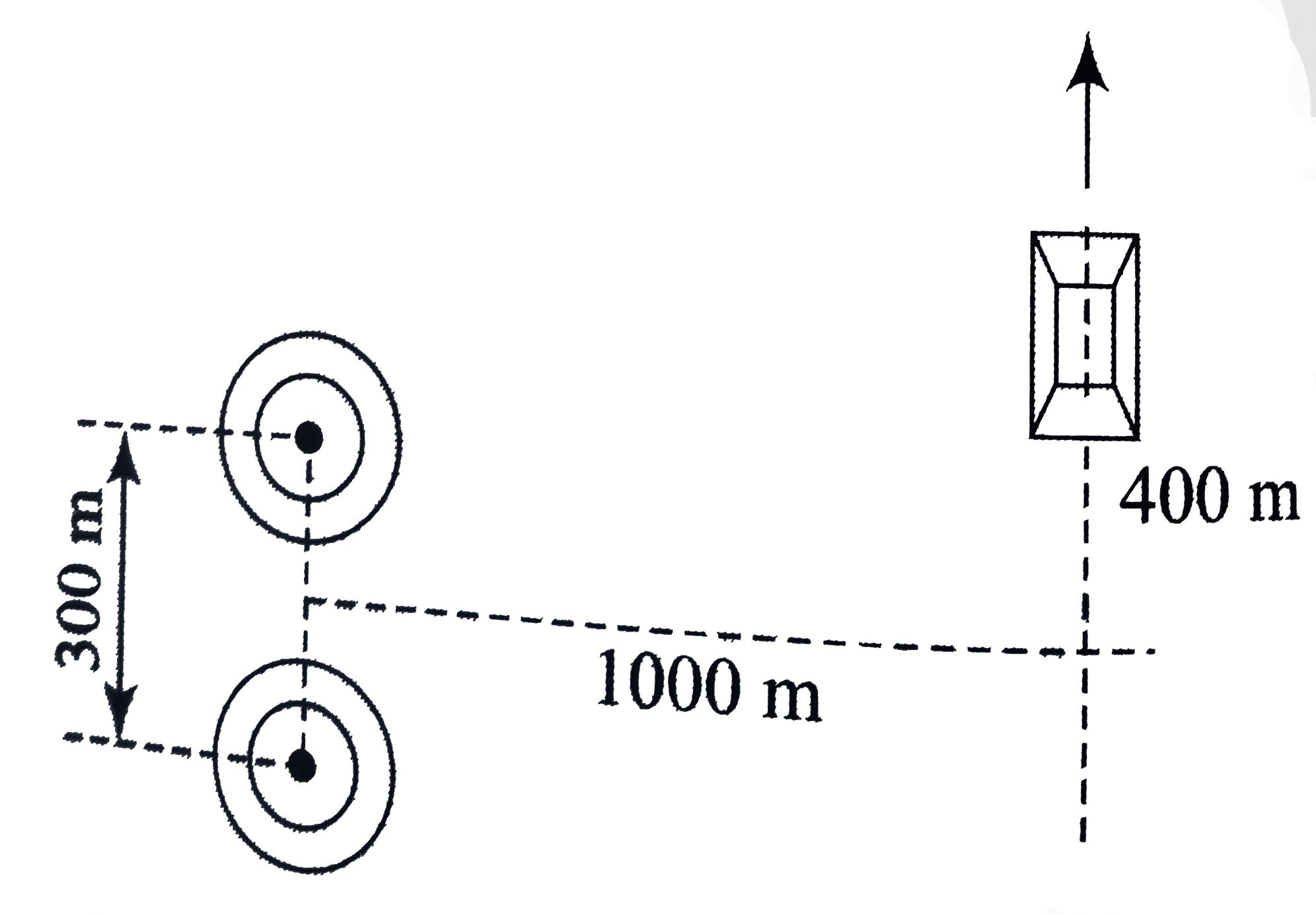Two radio antennas separated by 300 m as shown in figure simultaneously broadcast indentical singals at the same wavelength. A radio in a car traveling due north receives the signals. (a) If the car is at the position of the second maximum, what is the wavelength of the signals? (b) How much farther must the car travel to encounter the next mininum in reception? (Note: Do not use the small- angle approximation in this problem.)

Note, with the conditions given, then small angle appproxmination does not word well. That is, sinθ,tanθ, and θ are significantly different. The approach to be used is outlined below.
a. At m=2 maximum,
tanθ=400m1000m=0.400=25⇒sinθ=2√29
So, λ=dsinθm=(300m)2√292=300√29m=55.7m
b. The next mininum encountered is the m=2 minimum.
At the point, dsinθ'=(m+12)λ
which becomes dsinθ'=52λ
or sinθ'=5λ2d=52⎛⎜⎝300√29m300m⎞⎟⎠=52√29
⇒tanθ'=5141
so, y=(1000m)5141=524m
Therefore, the car must travel an additional 124m.

Topper's Solved these Questions
- WAVE OPTICSBOOK - CENGAGE PHYSICSCHAPTER - WAVE OPTICSEXERCISE - Subjective
11 Videos
- WAVE OPTICSBOOK - CENGAGE PHYSICSCHAPTER - WAVE OPTICSEXERCISE - Single Correct
128 Videos
- WAVE OPTICSBOOK - CENGAGE PHYSICSCHAPTER - WAVE OPTICSEXERCISE - Exercise 2.1
12 Videos
- THERMODYNAMICSBOOK - CENGAGE PHYSICSCHAPTER - THERMODYNAMICSEXERCISE - QUESTION BANK
34 Videos
- WAVESBOOK - CENGAGE PHYSICSCHAPTER - WAVESEXERCISE - QUESTION BANK
38 Videos
Similar Questions
Knowledge Check
If both the length of an antenna and the wavelength of the signal to be transmitted are doubled, the power radiated by the antenna
Ais doubledBis halvedCincreases 16 timesDremains constantIf λ is wavelength of radio signals to be transmitted, then the length of Hertz antenna is
AλBλ4Cλ2D2λ
A sound signal of 128 vibrations per second has a wavelength of 2.7m. Calculate the speed with which the wave travels.
View SolutionA car comes to a sliding stop in 5 m. During this process, the force on the car due to road is 100 N and is directed opposite to the motion.
(a) How much work done the road do on the car?
(b) How much work done the car do on the road?
View SolutionIn a moving car, radio signals are interrupted sometimes. Why ?
View SolutionA radio station broadcasts at 720 kHz. If the radio waves travel at a velocity of 3×108ms−1 , calculate the wavelength of the radio waves.
View SolutionWhat travels faster : a radio signal or sound in air ?
View SolutionA radio station is broadcasting programmes as 100 MHz frequency if the distance between the ratio station and the received set is 300 km how long the signal would take in reach the set from the radio station ? Also calculate the wavelength and wavelength of radio waves
View Solution
